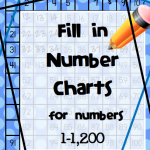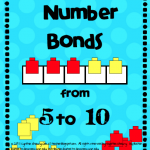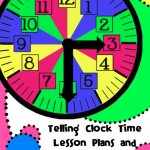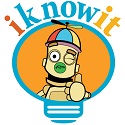Are You Using Addition Flashcards Effectively?
I recently created a video showing you how to use Addition Flashcards effectively. There are many ways to do this effectively using patterns. In the video I show you two of these patterns you can use to teach addition math facts. This video is a result of a parent teacher conference of which I was a part. During the conference the classroom teacher told the parent to use flashcards by having the child make a stack of the ones she knew and the ones she didn’t know. Because of this, I realize many people aren’t aware of how flashcards can be used with patterns to alleviate the rote memorization. Using patterns allows students a way to relate their learning to prior knowledge. Therefore student learning becomes more than just memorizing facts. To learn more watch below…
[embedyt] https://www.youtube.com/watch?v=-SDyhc9kdiU[/embedyt]
The flashcards in this video came from this math packet below:
Why Won’t My Students STOP TALKING??!!
What do you do when your students talk too much? I know it drives you insane! Is there a way to curb this behavior without taking away a privilege from everyone–moving clips, taking away Dojo Points etc.?
I’m going to share with you what works for me. First I start out the year with an anchor chart like the one pictured here.

I review each of the five items on the chart. I have students practice acting like each of the five expectations on the chart. For example, I have them read the expectations with me. When we read number three I have the students whisper in their teams. When we read number four I have them practice using low voices in teams. We talk about how students’ bodies look when students are using soft voices–how their bodies are close together. I even have children practice raising their hands to ask a question. We discuss how a child waits to be called on before making any noise, how students don’t get called on when making “ooh, ooh, monkey noises” etc.
Now, what happens if children are talking too loudly while working? After I have given them a warning or two about the class volume, I have found this to be a simple solution. “Students, you have been talking too loudly. Because of this, we are going to sit in absolute silence for one minute. If after one minute no one has made a sound, you will be able to talk again in low voices. During that minute if one person makes a sound–even a whisper–I will start the one minute over.”
I hold to what I said, and the noise magically lowers. Sometimes it seems that children just needed a break from their conversation and noise level to readjust their volume. I hope these tips help you. It is never too late in the year to establish your expectations. Don’t give up if you are struggling with a talkative class. 🙂
Multiplication Hand Tricks–Multiplying by 4s
Again by popular request, here is a video showing how students can use their fingers to multiply by four. This is my second video ever! I think I’m getting better at it! 🙂
This video was made in response to an earlier blog post here. Watch this for professional development, or allow your students to watch it for a brand new strategy for their math “tool box”. Enjoy!
[embedyt] https://www.youtube.com/watch?v=nKC7bgV9W3Y[/embedyt]
You may also like to watch this video about multiplying by 3s.
Multiplication Hand Tricks–Multiplying by 3s and 4s
Congratulations! You get to watch my very first video ever! This video is a result of my most viewed blog post ever You can see this post here. It is the post with my multiplication hands, which show how to multiply by three on your fingers.
One of the comments suggested I make a video for this post to explain it further. At the time I wasn’t comfortable with video nor did I have the equipment to video. So, just recently I decided to take this advice. After about 10 takes, I finally decided to settle on this video. I may come back and redo it later to make it better, but I’m at the point where I feel it is better to have something up than nothing at all. I really hope you learn something while watching to help your students! 🙂
[embedyt] https://www.youtube.com/watch?v=3TRjHG0GVEo[/embedyt]
And now…..how students can use their fingers to multiply by four. This is my second video ever! I think I’m getting better at it! 🙂
This video was made in response to an earlier blog post here. Watch this for professional development, or allow your students to watch it for a brand new strategy for their math “tool box”. Enjoy!
[embedyt] https://www.youtube.com/watch?v=nKC7bgV9W3Y[/embedyt]
Y
How You Can Help Kids Keep a Measurement Consciousness {Giveaway}
This year I decided to move my lining up position to a different side of the room. Because of this, I wanted to mark the space with tape so the kids could remember where to line up. Since I already had this lovely masking tape measured off in inches, I thought I would use it.
This cute ruler masking tape came from Office Depot a couple of years ago. I put this ruler masking tape along the sides of the door also, so that students could measure their height as they come and go out the door.
(Don’t you love my green neon door! And yes, I’m in a trailer :/) The tape just counts to 12 inches over and over again, so it is necessary for students to know 12 inches are in a foot. This allows for them to make conversions to compare heights as well. I placed foot indications on some colored dots. I didn’t write how many feet on each dot because I wanted to just provide enough support to get them started counting feet. I placed some blank dots along the tape, too, so they would do some figuring out on their own.
I may have students label their height at the beginning of the year, in the middle, and at the end with their initials on a colored dot. It will be so fun to watch them measure their heights all year and for them to watch themselves grow!
Giveaway organized by: Kelly Malloy (An Apple for the Teacher)
Everyone Needs a Second Chance…SALE!
I recently attended a professional workshop and the speaker gave us this quote: “Sometimes life gives you second chances because you weren’t ready the first time.” Now this quote has many applications, but here it means if you weren’t ready for the first TPT back to school sale you have a few hours left to get some deals. Everything in my store is 25% off! T ake a chance to snag a few of the items you’ve been swooning over.
ake a chance to snag a few of the items you’ve been swooning over.
How to Make an Easy, Reusable, No-Sew, Table Skirt
So last year I was going to make this beautiful table skirt with long strips of fabric tied around a piece of ribbon. I’m sure you have seen pictures on Pinterest. I stood in Jo-Anne’s fabric store for hours over the course of a couple of days debating over the best coordinating patterns and colors. I picked out some patterns with blues and greens in them to match my neon green door–seriously my door is painted neon green. Then time went by, and I found other things more important as I moved into my room. Hence, I never made the skirt. Feeling overwhelmed by cutting that many pieces of fabric strips in a straight line and hearing from another teacher how much work these skirts took…I decided to try something else.
Easy, no-sew, reusable fabric table skirt enters! I had noticed a teacher last year tack fabric to her desk with push pins and it stayed with no trouble. This teacher’s fabric just hung straight with not pleats, ruffles, etc. This gave me an idea! I measured the fabric to make sure I had enough to go around the front and sides of the table I wanted to cover. Instead of sewing a hem in the bottom, I folded it over and taped it with masking tape. It looks just like the hem had been sewn. No one will ever know the difference. Next, I started at one end of the table and put a thumbtack in the fabric and through the table. Most school type tables are made with particle wood and so a tack will push right through this.
If you double the fabric over itself about an inch then this makes nice pleats. I did this about every five inches. I wasn’t super precise with my measuring, but if you lay a yard stick down beside the edge of the table to measure, it works out pretty evenly.
 As you can see, the finished skirt is below. This fabric helps to really brighten up the room and gave me a ton of extra storage, which I really needed. This project took me probably less than two hours. The most time is spent measuring.
As you can see, the finished skirt is below. This fabric helps to really brighten up the room and gave me a ton of extra storage, which I really needed. This project took me probably less than two hours. The most time is spent measuring.
What’s great about this project is that I did no damage to the fabric. I didn’t sew the hem. I didn’t hot glue the hem. I didn’t even hot glue the fabric to the table. What does this mean? I can use this fabric over for another project like a bulletin board, a table cloth etc. if I ever want to.
So here’s the step by step process you need if you plan on adding a skirt to one of your tables.
- Measure the fabric to make sure you have enough to go around the sides of the table. If you want a pleat every 5 inches, then divide the total inches of the sides of the table you are covering by 5. This is your number of pleats. Then multiply this pleats number by 2. This gives you extra fabric to overlap when making your pleats. Add this number to the sides of the table you are covering. This should give you the length of fabric you will need to cover the table.
- I made the height of the fabric about 26 or 27 inches to hang enough to cover my junk. I made the official height 25 inches hanging from the edge of the table. The extra 1 or 2 inches gave me enough to make my masking tape hem. You could make your hem longer, but I really didn’t want to have it dragging on the floor for foot traffic.
- Start at the end of the table and tack in your fabric.
- Measure 5 inches (or however many inches distance you want your pleats).
- Overlap your fabric about an inch and place another tack on top of the overlapped fabric.
- Continue repeating this pattern until you make it to the end of the area you are wanting covered.
What Is It? {Giveaway Time}
So the story goes like this. I, of course, like most dutiful teachers went back to school before my contract began to get my classroom set up. I currently have a trailer classroom. We affectionately refer to all of us in trailers as the “trailer park”. Well the first time I went into my trailer and walked out I noticed a little friend waiting for me on the wood railing outside my door–pictured above.
What do you think it could be?
Suddenly I smiled and realized what this was. I hate to spoil the fun, but I’ll go ahead and tell you. Last school year towards the end you may remember I spent a lot of time doing electricity experiments with lemons, limes, potatoes, fruit, you name it. I had given some of the potatoes to a classroom teacher so that she could use them in her plant unit. She was allowing the students to sprout seeds. Well the last day of school, I had one little potato left that had sprouted a bit and I planned on taking it home to see what would happen. And, you guessed it! I forgot and left it on the railing outside my trailer. Little did I know two months later it would still be there untouched.
As if my whole house and yard haven’t become little science projects. Think with me. How would you turn this into a lesson? 🙂
Giveaway time!!!
Giveaway organized by: Kelly Malloy (An Apple for the Teacher)
Have You Been Using Flashcards Wrong?
I sat in on a parent conference this past year with a student and her teacher. The child was having difficulty learning multiplication facts. The teacher told the parent several things one of which was to use flashcards and put the ones she knew in one stack and the ones she didn’t in another stack. In other words she was prompting the child to memorize the facts.
Of course you know I interjected how the child might learn better with the flashcards by layering the ones she knew with the ones she didn’t know. For example, if she had learned all of her 2s, she could then place all of the corresponding 4s facts behind the 2s facts. Then she could learn how to double her 2s facts to get her 4s facts.
When studying multiplication, it lends itself so well to student led discussion about patterns they notice among the facts. For students to see these patterns it is essential for us to line the facts up in such a way that they can see the patterns. Normally, we hand students a HUGE multiplication chart and children see this and feel overwhelmed.
SEE OVERWHELMING CHART BELOW
Why not break this chart down so that students can see the patterns more readily.
If students only see part of the chart, then the patterns are more readily recognized and students are less overwhelmed. Students may also benefit from seeing patterns on a table like the following in which the patterns are more explicitly explained at the top. Could this be the reason students struggle with learning their facts? They don’t see the patterns. Doing something this simple could allow students to make sense of multiplication and find patterns in the numbers…especially those students who need extra support.
I have put together a packet that can help teachers (and possibly parents) use flashcards more efficiently with their students. In this packet, patterns in multiplication are unveiled and explicitly explained so that teachers can teach their students with patterns–not just by memorization.
Ways to use patterns for all multiplication facts are explained in this packet. There are teacher notes, flashcards, charts, and tables all organized by helping strategy. One could even use the teacher notes as a guide to plan lessons when beginning to teach multiplication. This pack would also be great for intervention with those students who just aren’t picking up the strategies to learn multiplication facts.
Take a moment to check out this product and consider teaching multiplication with patterns! 🙂












































